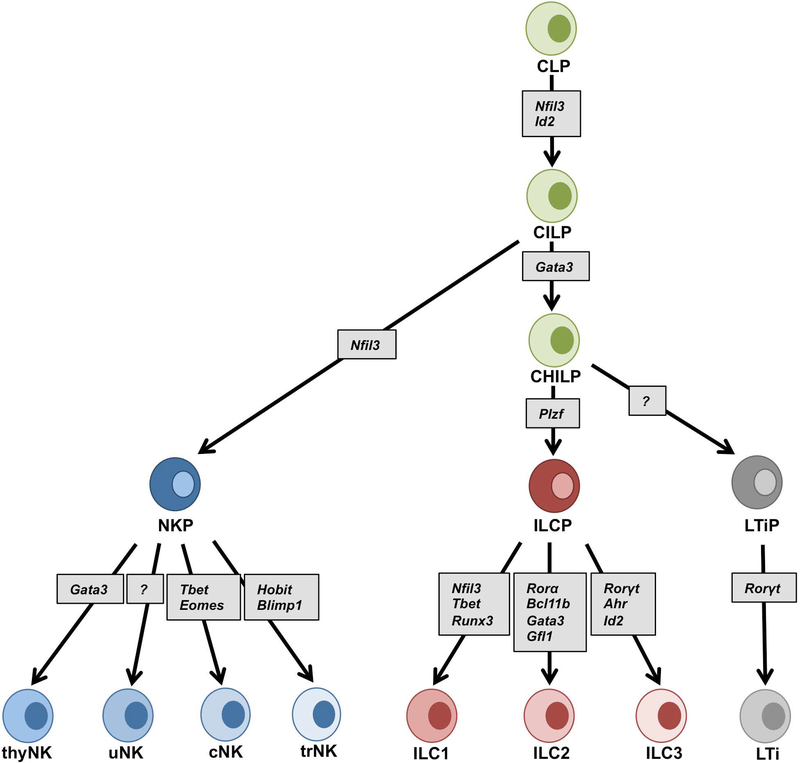Figure 2:
Development of ILCs. The common lymphoid progenitor (CLP) cells give rise to the common innate lymphoid progenitor (CILP) cells. The NFIL3 expressing cells mark the natural killer precursor (NKP) cells. The common helper innate progenitor (CHILP) cells are derived from the common lymphoid progenitor (CILP) cells and give rise to the PLZF+ lymphoid cell precursor (ILCP) cells and lymphoid tissue-inducer precursor (LTiP) cells. The NKP, ILCP, and LTiP cells generate five groups of ILCs; NK, ILC1, ILC2, ILC3 and LTi cells. The phenotype and the transcription factor requirement of each group of ILCs are dependent on the tissue microenvironment. Figure modified from (Vivier, et al., 2018). Nfil3 (nuclear factor IL-3 induced), Id2 (inhibitor of DNA binding 2), Gata3 (GATA binding protein 3), Plzf (promyelocytic leukemia zinc finger), Tbet (T box transcription factor), Eomes (eomesodermin), Runx3 (runt-related transcription factor 3), Rorγt (RAR related orphan receptor γt), Rorα (RAR-related orphan receptor α), Bcl11b (B cell lymphoma/leukemia11B), Gfi1 (growth factor independent 1), Ahr (Aryl hydrocarbon receptor), Blimp1 (PR domain zinc finger protein 1) and Hobit (homolog of Blimp1 in T cells).

